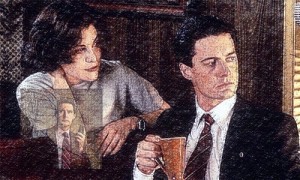Dr. Temperance "Bones" Brennan, Ph.D. is both a fictional character who features in the best-selling novels created by author Kathy Reichs and the lead female character in a Fox TV series partly based on the novels.
On television, Emily Deschanel portrays Dr. Brennan, and former "Angel" star David Boreanaz is FBI Special Agent Seeley Booth.
Brennan gets shot:
The Premise
"Bones" (a nickname she doesn’t particularly like) is a genius forensic anthropologist, who also holds Ph.D.’s in anthropology and kinesiology. Working out of the Medico-Legal lab at Washington, D.C.’s fictional Jeffersonian Institute, she serves as a consultant to the FBI, where’s she’s partnered with Special Agent Seeley Booth – her partner in a relationship outside the office that’s ultimately led to marriage and two kids.
Using her extremely high IQ, an obsessive adherence to scientific discipline, and mad forensic skills that have gained her a global reputation as an authority in the field, Dr. Brennan reconstructs murders based on the bone fragments and other organic residue discovered at a crime scene.
But her path to success wasn’t easy.
A Troubled Past
Brennan’s parents were notorious bank robbers, who changed their names from Ruth and Max Keenan and disappeared when Temperance (whose birth name was Joy Keenan) was 3 years old. She grew up in foster homes, and was often the victim of violent abuse. In later episodes of the TV series, it’s revealed that Ruth Keenan/Christine Brennan was murdered two years after she and her husband went on the run.
Max Keenan (played on TV by Ryan O’Neal) later came out of the shadows to assist his daughter when she became the target for a killer, and has returned on occasion as a recurring character in the show. So too has Temperance’s Benjamin Franklin-obsessed cousin Margaret Whitesell, who’s played by Emily Deschanel’s real-life sister Zooey.
A Brilliant Mind
Perhaps due to her blunted childhood, Brennan’s academic brilliance manifests as a Spock-like adherence to logic and scientific rigor, an inability to "get" traditional forms of humor or sarcasm, and awkward social skills. But she’s at heart a good and generous person, whose true character somehow always manages to transcend these limits.
Over several seasons of the TV series, "Bones" has mellowed and evolved, becoming a much more personable human being.
Bones not so cold:
Some Great Friends
A great influence on her is Brennan’s partner and FBI liaison, Seeley Booth. It was he who also coined the term "squints" for the forensic team at the Jeffersonian; brilliant scientists who squint at case evidence. "Bones" has a highly skilled set of colleagues, to assist in her investigations.
There’s Angela Montenegro, a talented forensic artist with prodigious 3D visualization skills, made even keener by the latest in holographic technology – who’s also Brennan’s best friend. Forensic pathologist Camille Saroyan is their department head at the Jeffersonian Institute, where entomologist Jack Hodgins performs magical feats of deduction using bugs, worms, maggots, or whatever species of vermin most infests a crime scene or corpse. And the team is assisted by a rotating set of quirky interns.
Some Great Television
"Bones" has been playing on Fox Television for several years, with season 8 culminating in the (finally…) marriage of Brennan and Booth.
Now into its 11th season, the show has an appreciable fan base – and the strength to try out new ideas, such as the recent crossover with the supernatural detective series "Sleepy Hollow":
"Bones"-"Sleepy Hollow crossover
Word and Screen
There are currently 17 Temperance Brennan novels which have been penned by Kathy Reichs. The books share only a loose continuity with the TV show. But notably, the television series features a direct and ongoing link: Emily Deschanel’s "Bones" is an internationally best-selling novelist whose detective fiction features a forensic anthropologist named Kathy Reichs, whose life and methods mirrors that of Brennan’s own character.
Both the books and the show are well worth a look.










